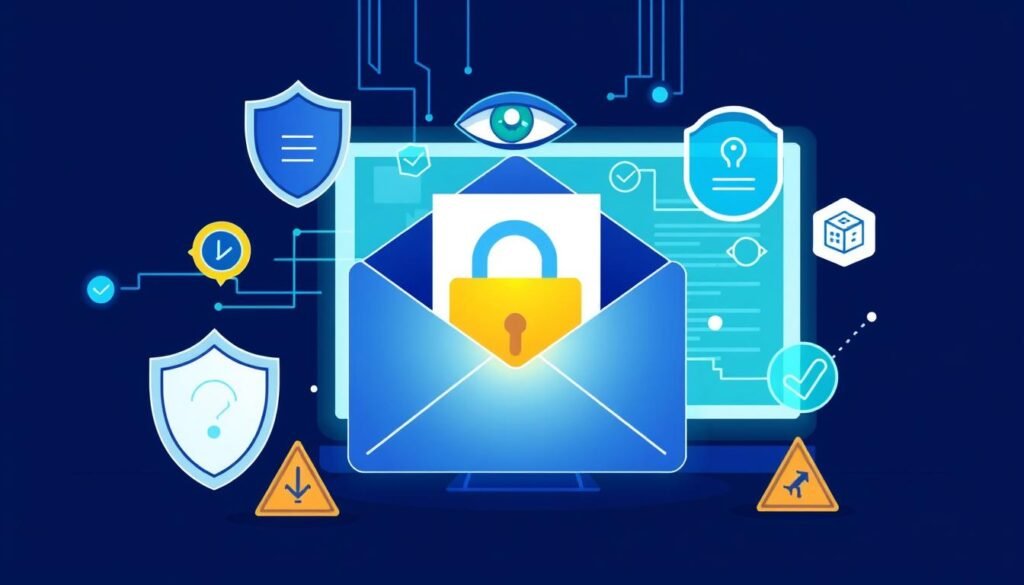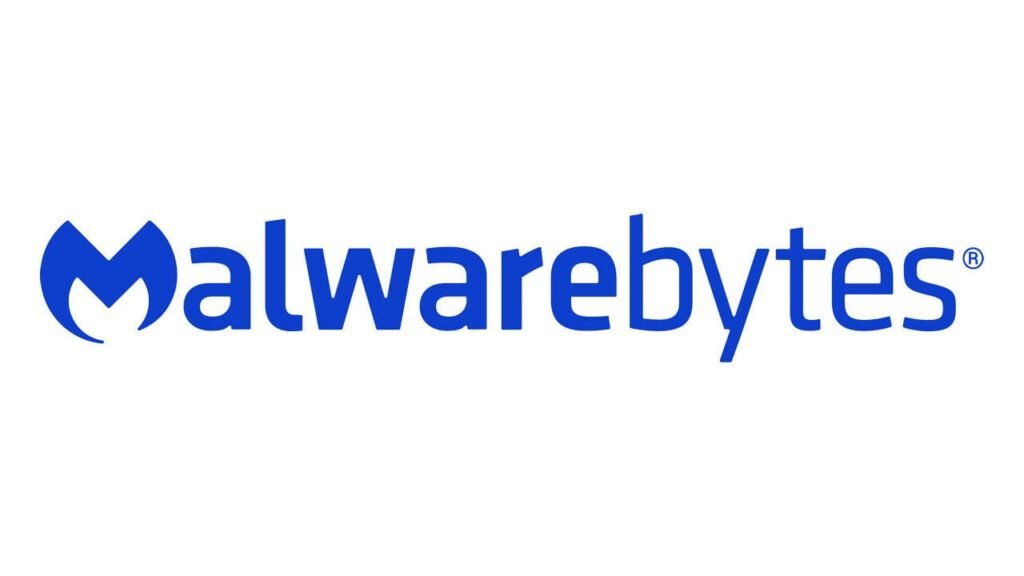Phishing attacks pose a significant threat in today's digital landscape, where cybercriminals employ various email security strategies to deceive individuals and organizations. Understanding the effective ways to prevent phishing attacks is essential for safeguarding your sensitive information. With studies indicating that a large percentage of cyber breaches involve human error, particularly through phishing methods, it becomes crucial to remain vigilant and informed.
A cybersecurity report reveals that phishing is a prevalent form of cybercrime due to its high effectiveness, with many attacks executed via emails and social media platforms1. These scams often create a false sense of urgency, pushing recipients toward hasty decisions. It's important to recognize the common tactics employed by scammers, such as grammar errors and generic greetings, as they serve as red flags1.
By implementing proven phishing prevention techniques, you can significantly enhance your email security and overall cyber resilience.
Key Takeaways
- • Phishing attacks are a key method of cybercrime, making knowledge on prevention vital.
- • Recognizing signs of phishing emails, such as spelling mistakes and generic greetings, is critical.
- • Employing effective phishing prevention techniques can safeguard sensitive information.
- • Staying informed on the latest phishing tactics enhances overall cybersecurity.
- • Regular employee training on cybersecurity trends and risks is essential.
Understanding Phishing Attacks
Phishing is a significant form of cybercrime that aims to trick victims into revealing sensitive information such as usernames and passwords. You may wonder, what is phishing? This tactic often involves impersonating trusted entities or institutions, manipulating individuals into surrendering their personal data. As phishing attacks evolve, they now encompass various methods such as email scams, social media phishing, and more sophisticated techniques like spear phishing and vishing. Today, around 3.4 billion phishing emails are sent daily, highlighting the scale of this issue2.
What is Phishing?
Essentially, phishing involves establishing a false sense of urgency or fear. Scammers typically use social engineering strategies to compel victims to act quickly, neglecting to verify the authenticity of requests. The CrowdStrike 2024 Global Threat Report points out evolving trends in phishing, which showcase a transition from basic email scams to sophisticated tactics that leverage AI to enhance effectiveness2. Understanding the types of phishing attacks is crucial for safeguarding your personal and organizational data. Common forms include:
- • Email phishing
- • Spear phishing
- • Whaling
- • Smishing (SMS phishing)
- • Vishing (voice phishing)
- • Application phishing
Common Tactics Used by Scammers
Scammers employ various tactics used by scammers to target victims. Identifying these tactics can significantly reduce your chances of falling prey to such attacks. Key indicators include:
| Indicator | Explanation |
|---|---|
| Urgent Language | Messages that create a sense of immediate action required. |
| Spelling Errors | Many phishing messages contain typos and grammatical mistakes. |
| Generic Greetings | Phishing emails often lack personalized greetings. |
| Requests for Personal Information | Legitimate companies rarely ask for sensitive information via email. |
| Suspicious Links | Links leading to altered domain names aimed at mimicking real sites. |
| Too-Good-To-Be-True Offers | Offers that seem too good to resist may be a trap. |
By scrutinizing web addresses, you can spot deceptive domain names before taking action2. Awareness of these indicators is a vital step in resisting phishing attempts, which pose significant risks, such as unauthorized account access and identity theft3.
How Phishing Attacks Work
Understanding how phishing attacks are executed is essential for safeguarding yourself against these prevalent threats. Many individuals and organizations fall prey to scams due to their failure to recognize the phishing red flags. You'll want to be aware of several warning signs that can help you in identifying phishing attempts before they escalate.
Identifying the Red Flags
Phishing emails often imitate legitimate organizations, employing similar layouts and language to deceive you into believing they are authentic. Be cautious of unexpected emails, especially those that create a sense of urgency or pressure you to take immediate action, such as clicking links or downloading attachments4. These emails typically ask for sensitive information like passwords or secure credentials, directing you to fake websites designed for data theft45. You should also remain vigilant against emails coming from compromised accounts within organizations, as scams can continue from valid email addresses4.
Understanding the Impact of Phishing
The impact of phishing attacks can be profound, leading to significant financial loss, identity theft, and reputational damage for both individuals and businesses. Research indicates that 82% of cyber breaches involve human error, primarily through phishing5. Victims may find themselves entangled in extensive recovery processes, from regaining access to their bank accounts to addressing identity theft issues that could take years to resolve6. Always remember that the first step to defending against these attacks involves recognizing the signs and understanding their potentially devastating consequences.
Effective Ways to Prevent Phishing Attacks
To tackle the increasing threat of phishing attacks, organizations must employ several effective strategies. Implementing multi-factor authentication creates an additional layer of security that goes beyond traditional passwords. This method not only protects access to sensitive information but significantly reduces the risk associated with compromised credentials. Phishing attacks have become a prevalent method for cybercriminals to steal personal information, making it imperative that businesses adopt protective measures7.
Implementing Multi-Factor Authentication
Using multi-factor authentication (MFA) can be a game-changer in your defense against phishing. This system requires users to verify their identity through multiple means, ensuring that even if credentials are stolen, unauthorized access remains difficult. By implementing MFA, you significantly enhance your security posture and reduce the likelihood of unauthorized access to accounts and sensitive information.
Utilizing Email Filtering Techniques
Email filtering techniques are vital for preventing phishing attacks. By employing advanced email filtering solutions, organizations can effectively block malicious emails from reaching the inboxes of users. This technology helps prevent phishing scams that often involve persuading individuals to provide sensitive information or click on harmful links. Spam phishing, which aims to capture any unsuspecting person, underscores the necessity of effective filtering mechanisms7.
Regular Employee Education and Awareness Training
Investing in employee education and awareness training is key to combating phishing attacks. Continuous training enables employees to recognize and report suspicious activity, making them less likely to fall victim to phishing scams that can result in financial losses and compromised data. Regular sessions highlighting the various forms of phishing — such as spear phishing and clone phishing — empower your team to stay alert and informed. Remember, phishing can affect individuals of all ages, making your employees the first line of defense7.
| Method | Description | Benefits |
|---|---|---|
| Multi-Factor Authentication | Requires additional verification methods beyond passwords. | Enhances security and reduces unauthorized access risks. |
| Email Filtering | Blocks harmful emails before they reach users. | Decreases phishing threats and improves email security. |
| Employee Education | Teaches employees to recognize and respond to phishing. | Strengthens overall security posture and awareness. |
By integrating these strategies into your cybersecurity framework, you can significantly improve your organization's ability to defend against phishing attacks, thereby protecting sensitive information and fostering a safer digital environment for all.
For more on data collection, usage, and protection measures, refer to the privacy policy8.
Email Security Best Practices
Establishing effective email security practices is essential to reduce the risk of falling victim to phishing attacks. A proactive approach to recognizing suspicious emails can help you stay one step ahead of cybercriminals. Awareness of common indicators such as urgent requests, grammatical errors, and vague salutations can bolster your defenses.
Recognizing Suspicious Emails
Recognizing suspicious emails requires a keen eye for detail. Pay attention to key signs that may indicate a phishing attempt:
- • Urgency or pressure to act quickly
- • Spelling and grammar mistakes
- • Unfamiliar greetings or sender addresses
- • Discrepancies in email links and domain names
- • Unexpected attachments that seem out of place
- • Offers that appear too good to be true
- • Requests for sensitive or personal information
Specific tactics used in social engineered phishing emails are highly sophisticated and designed to evade detection by conventional email filters9. Understanding these characteristics is fundamental for recognizing suspicious emails in your inbox.
Recommendations for Secure Email Communication
For secure email communication, follow these best practices:
- • Never click on links from unknown or untrusted sources.
- • Update your email passwords regularly to enhance security.
- • Utilize two-factor authentication (2FA) for added protection.
- • Consider using encrypted email services whenever possible.
- • Implement email scanning tools to detect malicious content.
Regular employee training is essential to ensure everyone can spot and report phishing attempts effectively10. Employing these recommendations will empower your team to engage in secure email communication and reduce risks significantly.

Cybersecurity Awareness Training
Cybersecurity awareness training should be a fundamental aspect of your organization's employee development strategy. Given that 82% of cyber breaches are linked to human involvement, continuous learning in security is essential to mitigate risks associated with phishing attacks11. By focusing on ongoing education, you empower your workforce to recognize and respond to emerging threats effectively.
Importance of Continuous Learning
Continuous learning in security helps ensure that employees stay updated on the latest phishing tactics. Phishing attacks have seen a steady increase since 2019, with 71% driven by financial motives12. Regular training sessions enhance employees’ abilities to identify suspicious emails promptly, which is critical since users can fall for phishing emails in under 60 seconds13.
Conducting Phishing Simulations
Incorporating phishing simulations into your cybersecurity training effectively tests employee readiness. It shows that an effective security awareness program can reduce high-risk security behaviors by up to 90%13. By conducting these simulations, businesses can track how well employees respond to real-world phishing scenarios, making it possible to tailor training to address identified weaknesses and enhance overall security measures.
Utilizing Anti-Phishing Tools
In today's digital landscape, utilizing anti-phishing tools is essential for enhancing your cybersecurity strategy. These tools assist in spotting phishing emails, allowing users to identify and avoid malicious threats effectively. A variety of technologies are available to help both individuals and organizations protect their sensitive information.
Tools to Spot Phishing Emails
Anti-phishing tools focus on preventing coercive emails and securing incoming communications that claim to be from legitimate sources. According to reports, phishing attacks aim to steal sensitive information such as usernames and passwords, making the implementation of these tools vital14. Companies like Avanan offer robust solutions that analyze message contents and sender-receiver relationships to detect suspicious messages effectively15. Education remains a key defense, and informing users through training programs enhances their ability to recognize red flags in email communications15.
Browser Extensions and Add-ons
Browser extensions for security add an additional layer of protection against phishing threats. Popular options, such as Norton Genie, alert you to unsafe websites, providing a proactive approach to online safety. The constant evolution of phishing tactics means that organizations must remain vigilant and update their strategies regularly, utilizing tools that leverage AI and machine learning to adapt to new threats16. Regular security awareness training complements these tools by reinforcing the importance of recognizing phishing attempts and understanding their characteristics16.
Strong Password Management
Effective password management is crucial in preventing unauthorized access to your accounts. Implementing strong and secure passwords can significantly reduce the risk of falling victim to phishing attempts. One of the most important aspects is creating secure passwords that consist of a mix of letters, numbers, and symbols.
Techniques for Creating Secure Passwords
When creating secure passwords, consider the following techniques:
- • Use a combination of uppercase and lowercase letters, numbers, and special characters.
- • Avoid using easily identifiable information, such as birthdays or names.
- • Consider using passphrases composed of random words to improve complexity.
- • Utilize password managers to generate and store complex passwords securely.
Password managers play a significant role in maintaining good password hygiene by recommending long, complex, random, and unique passwords for each website17. They can also display icons in the browser bar to indicate known and confirmed URLs, and alert users when they mistype or misspell a website URL, enhancing overall security.
Regularly Rotating Passwords
Regularly rotating passwords can significantly enhance your password management strategy. It ensures that if one password is compromised, the time frame to exploit it is minimized. Experts recommend changing passwords periodically, coupled with the use of two-factor authentication (2FA) to further reduce the risk of phishing attacks18. Statistics show that companies should hold awareness training at least twice a year or once per quarter, which complements strategies like password rotation in securing sensitive information18.
Ultimately, strong password management not only protects your accounts but also contributes to a safer digital environment171819.
Incident Response Planning
Incident response planning is vital for organizations to effectively tackle phishing attacks. This involves formulating a comprehensive response strategy for phishing incidents to ensure swift action when an attack occurs. You should constantly train your employees on this response strategy, equipping them with the knowledge needed to identify and contain potential threats.
Developing a Phishing Response Strategy
Creating a robust response strategy for phishing incidents is essential. With phishing attempts hitting an all-time high in December 2021 and more than 255 million attacks reported in the first half of 2022, organizations cannot afford to be unprepared2021. A structured plan should include steps for identification, containment, eradication, and recovery from attacks. Regular simulations can help test this plan and improve employee vigilance.
Communicating with Affected Parties
Effective communication after phishing attacks plays a significant role in maintaining trust with customers and stakeholders. Being transparent about the incident and the steps taken for remediation can help mitigate reputational damage20. It's crucial to provide updates on how to protect oneself further, such as advising customers to monitor their accounts and change passwords. Building a culture of trust ensures that everyone feels secure when reporting suspected phishing attempts.

Monitoring Your Financial Accounts
Your financial accounts serve as critical gateways into your personal and professional life. By consistently monitoring accounts and staying alert to any suspicious activities, you can significantly reduce your risk of falling victim to phishing scams. Regular attention will help you quickly spot signs of unauthorized access or fraud.
Reviewing Account Statements Regularly
One of the most effective ways to protect yourself is by regularly reviewing financial statements. A routine check allows you to spot unusual transactions or discrepancies, prompting immediate investigation. According to the Federal Bank, it's advised that account holders verify the legitimacy of communications from financial institutions by reaching out directly using verified contact information to avoid potential phishing scams22. Furthermore, research indicates that scammers launch thousands of phishing attacks every day, constantly updating their tactics to target unsuspecting individuals23.
Setting Up Fraud Alerts
Setting up fraud alerts with your bank can be an excellent measure to enhance your account security. Fraud alerts serve as notifications of potentially harmful activities, helping to minimize the risk of identity theft. In today's digital landscape, phishing remains the most prevalent form of cybercrime, with approximately 3.4 billion spam emails sent daily, emphasizing the importance of vigilance and prompt action24. If you suspect that your personal information has been compromised, immediately visit IdentityTheft.gov for specific steps to take23.
Promoting a Security-First Culture
Establishing a security-first culture within an organization is paramount to combatting phishing attacks effectively. When all employees embrace security practices, it creates a collective responsibility for safeguarding sensitive information.
Involving All Employees in Security Practices
Involving all employees in security practices is crucial for a robust security-first culture. This involvement heightens accountability and equips everyone with the knowledge necessary to recognize potential threats. Organizations that prioritize employee involvement in security may see reduced risks, as workforce participation fosters a proactive stance toward identifying vulnerabilities and implementing effective responses to phishing threats25.
Building Trust in Reporting Phishing Attempts
Creating an atmosphere of trust encourages employees to report phishing attempts without hesitation. Such transparency can lead to earlier detection of threats, allowing organizations to react quickly and mitigate risks. Trust can be further cultivated through regular training that emphasizes the importance of reporting phishing attempts, which not only protects the organization but also promotes a continuous learning environment2627.
Staying Updated with Security Patches
Maintaining current software and operating system updates is essential for your overall cybersecurity strategy. Ensuring that you are actively staying updated with security patches fortifies your defenses against potential threats like phishing attacks. This proactive approach can significantly reduce vulnerabilities within your systems and safeguard your sensitive data.
Importance of Operating System Updates
OS updates importance cannot be understated. Regularly applying these updates minimizes security risks by eliminating potential loopholes that attackers might exploit. In fact, outdated operating systems can be prone to various security challenges. When you neglect these updates, you may inadvertently expose your devices to breaches, exposing sensitive information to unauthorized parties.
Keeping Software Updated to Prevent Exploits
Implementing robust software update practices opens up a range of benefits. Keeping software applications updated ensures all available protections are active and fully operational. Delaying updates may leave critical vulnerabilities unaddressed, increasing the chance for cybercriminals to launch effective phishing attacks. Statistics reveal that 33% of breaches in 2019 involved some form of phishing, highlighting the necessity for vigilance in software updates to mitigate such risks28.
Prioritize routine checks for updates on all software tools you utilize in your personal and professional life. By adhering to these practices, you create a more secure environment and greatly reduce the likelihood of falling victim to potential cyber threats. Be proactive and ensure your systems are complaisant with the latest security measures.
Conclusion
Understanding and implementing effective ways to prevent phishing attacks is not just a matter of individual responsibility but a collective goal for organizations. With staggering data indicating that phishing attacks account for 80% of security incidents and only 3% of the population able to recognize sophisticated phishing attempts, it’s clear that vigilance must be a priority29. Employing robust email security best practices and ensuring continuous employee education are crucial elements for safeguarding against these threats. Initiatives such as regular training and deploying spam filters are essential in arming your team with the knowledge required to navigate a complex cyber landscape30.
As the landscape of phishing evolves, so must your strategies. Organizations must embrace a multi-faceted approach that includes strong security protocols, frequent software updates, and a culture that encourages open communication about potential threats. Doing so not only enhances your defenses but also fosters an environment where every member plays a part in maintaining security31. Ultimately, by taking proactive measures to stay educated and prepared, you can substantially improve your resilience against the relentless tactics employed by cybercriminals.
Seizing the moment to reassess your defenses and enhancing your strategies will be key in this ongoing battle against phishing. Remember, the stakes are high; minimizing the risks associated with phishing here and now could prevent significant financial losses and preserve your organization's integrity in the future29.




